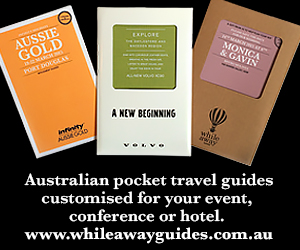I gave my first address at an event when I was just twenty-one. A friend had asked me to amuse the 100-odd delegates at the black-tie function with a witty introduction. I’d seen other people talking publicly, many times. They were eloquent and seemed relaxed. How tough can it be? I thought to myself. All I needed to do was pitch up, be myself and I would surely be just as entertaining.
It started. By the time the guests were seated I’d had several drinks. I stood up, looked at the expectant faces of the guests, and froze.
A visceral fear gripped me as I suddenly realised I had nothing to say. Though in hindsight it was obvious what I should have done, I couldn’t even bring myself to thank my friend for inviting me to talk. Seconds stretched agonisingly while the guests waited for me to begin. Then I remembered a joke. I’ll make them laugh, I told myself.
I still remember the gag. It was about a woman who tells her butler to remove her dress, then her shoes, then her underwear. The punchline was: “Now Jeeves, don’t ever let me catch you wearing my clothes again.”
I’d thought the joke was funny when I first heard it in the raucous environs of a pub. Now it raised barely a titter. Inwardly I squirmed. The gag was wholly wrong for the formal gathering. My friend was embarrassed too, and quickly took over.
I’ve thought about that evening many times, because the incident has several lessons for speech makers, and always epitomises, for me, some of the worst mistakes they can make at conferences and functions. Since then I’ve tried to make amends – and learned some important rules.
 If you heed them you may find people will love hearing you talk. A happy audience is an attentive one – who’ll absorb the messages you want to deliver. And when you know they’re enjoying what you’ve got to say, you’ll have fun as well.
If you heed them you may find people will love hearing you talk. A happy audience is an attentive one – who’ll absorb the messages you want to deliver. And when you know they’re enjoying what you’ve got to say, you’ll have fun as well.
These rules are simple. Some of them are elementary, but many people forget the obvious, which is why folks you’d expect to know better, like senior politicians and self-important business managers and company leaders, so often bore their audiences rigid at functions.
PREPARATION IS EVERYTHING
Mark Twain pointed out that it can take more than three weeks to prepare a good impromptu speech. As I discovered at my friend’s event, there’s no short cut to a good one. To make an entertaining, inspiring and informative public address, good preparation is arguably the most important weapon in your armoury. And as with all worthwhile creative endeavours, the more effort you put in up front, the better results you’ll get.
Find out all you can about the subject by reading or talking to people who are intimately acquainted with it. If the speech is about a product, for example, talk to everyone involved in creating and marketing it and read up as much of the relevant literature online and elsewhere as you can; if it’s about a company, phone up or write to key people. Ask them for stories and insights about the enterprise which you might be able to use.
Research quotes you might want to include, then sift them to select the ones you like best and which best illustrate the points you want to make.
USE HUMOUR, CAREFULY
Though it can fail disastrously if used inappropriately, humour is a vital ingredient in just about every conference address. A message for every nervous speech-maker – one that should, in theory, help to alleviate nervousness if it’s properly absorbed – is that your listeners want you to succeed when you step up to the podium. That’s because everyone has sat through speeches of excruciating boringness and lengthiness, and they’re sick of it.
Far too many speeches are boring. In many cases the culprits are people in positions of authority who are used to having captive audiences hanging on their every word because they have no other option. They’re often executives, bureaucrats, politicians, academics, teachers and – yes Lord – the clergy.
I well recall sitting through an hour-long speech during a publishing-industry event in Sydney. It was delivered just after lunch, the time known as the dead hour at conventions, in a droning monotone by a company’s financial executive. Unalleviated by humour, it had no structure, being entirely a recitation of figures and facts accompanied by the occasional overhead chart packed with columns of incomprehensible numbers, graphs, arrows and boxes. People fell asleep; some left.
I was trapped in the centre of a row and couldn’t escape without making a spectacle of myself, so I was forced to endure it, becoming more and more angry about being subjected to the ordeal.
 The clergy are notorious sinners when it comes to talking boringly and humourlessly, and always have been. The American president Calvin Coolidge reportedly once sat through an interminable hellfire and damnation sermon from a preacher. When asked afterwards what the preacher spoken about, the president replied: “Sin, he was against it.”
The clergy are notorious sinners when it comes to talking boringly and humourlessly, and always have been. The American president Calvin Coolidge reportedly once sat through an interminable hellfire and damnation sermon from a preacher. When asked afterwards what the preacher spoken about, the president replied: “Sin, he was against it.”
Everyone has suffered through events like this. That’s why a speaker who’s genuinely amusing, entertaining and interesting is loved by audiences. Subconsciously, folks who wait for an address to begin are hoping that, just this time, they won’t be bored half to death.
If the talk is better than they expect, they sit up, their eyes brighten, they think to themselves, This is not so bad. Gags, one-liners and little stories that they’d ordinarily find mildly funny now make them laugh aloud. And laughter is contagious; it has an energising effect on an audience and helps to sharpen its attention.
So, as they look up at you, captive audiences who sit and wait for you to begin your talk are subconsciously asking, “Please, entertain me.”
To illustrate what I mean, some years ago I was giving an address to about 300 people at a conference, and discussing a new system we had introduced to produce and publish a magazine. I knew some in the audience had misgivings about the proposed changes, so I told a story.
“I know some people are nervous about this change,” I said. “It reminds me of the American astronaut who was asked whether he was nervous while sitting in his rocket on the launch pad. ‘Of course I was nervous,’ he said. ‘I was in a machine made from 100,000 parts, all produced by the lowest bidder.’”
Not that funny, but it worked. The audience, who’d been in a stupor while sitting through long presentations earlier, now laughed loudly. The reason it worked is that the theme of the gag – nervousness about something new and challenging – was directly related to the theme of my talk.
Attempts at humour that are inappropriate or unrelated to the subject/s of the function can be catastrophically un-funny. I once attended a wedding at which the best man stood up to talk about the bridal couple. His jokes were crude and embarrassing. He ended by telling a joke about a Frenchman who had wished a married couple “a penis” (happiness, geddit?) on their wedding night. Nobody laughed. The parents and grandparents sat stone-faced.
HAVE A THEME
Most addresses must have a focus, and their “ingredients” – the observations, jokes, stories – should relate directly to it. If you’re talking about a new product, don’t digress by discussing show business, or politics, or lawyers, unless you can demonstrate the relevance of these observations to the theme of your talk.
USE ANECDOTES, TELL STORIES
To paraphrase the British poet T. S. Eliot, the key to successful communication is “show, don’t tell.” Essential to speech-making at meetings is the ability to illustrate the themes of your address with real-life examples: anecdotes. By using these you can demonstrate to your audience aspects of the ideas you’re discussing, rather than simply telling them things and expecting them to take your word for it.
You can tell your listeners a product or new brand is worthwhile, but why should they believe you unless you can supply evidence to support what you’re saying? That evidence can be powerfully supplied by the right anecdotes.
Anecdotes can be funny, or serious, but insightful. Above all they must be relevant. Obviously those you use must be evaluated. If you’re discussing the financial growth of a telecommunications company, for example, it won’t serve you well to illustrate your theme with an anecdote about what’s happening in the motor industry, unless you can link it directly to the focus of your speech.
 USE OTHER EVIDENCE
USE OTHER EVIDENCE
In speech-making at conferences, you should enrich your presentation with more evidence than what can just be provided via anecdotes. Often this takes the form of statistics and trends.
But here’s a potential pitfall. Statistics are boring in anything other than the briefest form, and so are market trends, macro-economics, recitations of dry history and so forth. If you’re citing stats, choose two or three that are short, and most strongly illustrate the point you want to make.
For example, if you’re talking about advertising sales in a publishing company, something as brief as this might be appropriate:
The third quarter has been a challenge. We’re eight percent behind budget in the southeast, tracking on budget in the north and around 14 percent up in the southwestern districts. Happily, October looks like being a record month, with three new clients signing up for the first time. We’re confident that we’ll still hit our targets for the fiscal year.
Then move on. Any more statistics here – dealing with this subtheme – would be overkill, especially if you have more potentially dry subjects and stats to get through.
REFER TO THE WISDOM OF OTHERS
Carefully selected quotations can be a key component of any speech, for any occasion. The intelligent reflections of successful people, especially if they’re concerned with the issues under discussion, are insightful and useful.
They add a new intellectual dimension to a public address that prods a listener’s mind, helping to keep your audience thinking and attentive. Moreover, they can add to your listener’s enjoyment by giving him or her a perception of “buy-in.”
It’s a form of intellectual flattery: you’re sharing with them insights into the minds of great people, knowing they’ll appreciate them. And they invariably do.
Here’s an excerpt from an introduction to a seminar:
As you know, the primary reason for this seminar is for us to talk over issues relevant to the company and, ultimately, have a drink and a chat. We all work so hard these days on a never-ending production cycle that we have little time for relaxed examination of our working lives and informal communication. And as Socrates said 2500 years ago, “the unexamined life is not worth living”.
It’s a brief quote from Socrates, but a nice punctuation at that point of the talk . . .
Here’s another:
I believe a Greek prime minister once said, “Last year we were standing on the edge of a precipice, this year we’ll take a great leap forward.” We felt a bit like that in Melbourne when we were planning our anniversary celebrations. The anniversary was a great opportunity to gain exposure for our company, we knew, but it was also a leap into the unknown . . .
Especially effective are quotes from famous people that make an audience laugh. I used this one from Churchill to comment on wordiness in speech-making, near the end of the talk when I wanted to tell the audience I wouldn’t keep them much longer:
During a long and boring speech being delivered by an opponent in the House of Commons, Winston Churchill slumped forward in his seat and closed his eyes. His opponent stopped and asked, “Must you fall asleep when I’m making my speech.” Churchill replied, “No, sir, it is entirely voluntary.”
KEEP IT SHORT
This is the most overlooked advice in speech-making, and it’s been thus for centuries. Ever since Romans stood in the sun to hear Caesar and his senators orate all day, people have suffered under the drone of the egregious public-speaking bore.
 Some of the greatest speeches in history have only lasted a few minutes, notably Abraham Lincoln’s Gettysburg address (four minutes) and Reverend Martin Luther King’s “I have a dream” speech (five).
Some of the greatest speeches in history have only lasted a few minutes, notably Abraham Lincoln’s Gettysburg address (four minutes) and Reverend Martin Luther King’s “I have a dream” speech (five).
There are reasons that these great orations have stood the test of time, and brevity is one of them, though obviously the length of your address depends on how many minutes you’re required to talk.
Once you’ve written or prepared your speech in notes, go over it again and again – at least three times – to see what you can whittle out of it without losing the sense or meaning of what you want to say. This cutting and editing process is a valuable discipline, and it’s surprising what you can lose in the way of extraneous adjectives, phrases and needlessly long explanations. Every word you cut while maintaining the integrity of your address helps to strengthen it, and your audience will probably thank you for it.
OPEN BIG
To set the tone for the rest of your address, you must grab and hold your audience’s attention from the start. Here’s an anecdote that came from one of my wife’s university dissertations, which could be used to bridge into a number of themes, including integrity, honesty or wealth:
The urge some people have to mythologise the past was brought home to me when I went with my family to visit the California castle of media magnate William Randolph Hearst. After touring the estate, which includes a swimming pool surrounded by ancient Greek columns and other treasures plundered from the art houses of Europe, visitors can browse through a museum which depicts Hearst as a devoted family man.
The truth is, Hearst’s wife never set foot in the home he spent more than 30 years building with his newspapers, which were driven by his own political ambitions and commercial interests. His mistresses visited often. Hearst, for all his wealth and moral posturing, was a fraud. He was not true to the image of himself he tried to portray.
You could then continue by saying, “Today I want to introduce a group of people who have always stood up for what’s right . . .”
Another:
Ladies and gentlemen, once again I have the pleasure of welcoming you to the Chairman’s annual awards dinner. And I see that those of you who’ve heard my speech before have tried to get seats near the doors for an easy exit. But you’ll be pleased to know that while thinking about what I’d say, my wife advised me to be brief. “Remember,” she told me, “that the Gettysburg Address has 271 words and the Ten Commandments have 297.” She also reminded me that we’ve been married for 53 years, and it only took two words, “I do,” to get us to this point. So I promise to be brief.
 Another:
Another:
Good morning everyone. It’s a pleasure to be in the company of civilised people who appreciate you, but of course I also enjoy occasions like these . . . I wanted to talk to you today about a technique for getting business and exposure for your company that’s very cost effective if done properly, and which few people in business appreciate.
Another, starting with an appropriate joke, because it was for an audience of male workers at an event at an industrial plant:
Welcome to our birthday celebrations. I promise to be brief. I remember the story of the company chairman who gave a talk. Afterwards he asked a young colleague how he thought it had gone. “You gave a Rolls Royce of a speech sir,” the young man said. “What do you mean?” the chairman asked. “Well you were well oiled, you ran on for a bloody long time and I couldn’t hear a thing,” he replied. I’m not well oiled yet, but . . .
At a school event:
Members of staff, students and especially parents. . . . it is a special privilege for me to welcome the parents here, as this is my first opportunity to talk to you since my election as President of the Board in May. Much has happened over the past seven months and I would like to take a few moments to outline some of exciting developments. In doing so I’m mindful of something I saw in a rest room during a recent trip to Atlanta. The rest room had one of those hot-air contraptions for drying your hands and someone had written on the button that activates the hot air: Press here for a message from the company president.
NEVER OPEN WITH A NEGATIVE
You may have heard speech-makers starting with something like this: I wish I’d had had more time to prepare for this, so please excuse me . . . Or, Forgive me, but I’ve been terrified about giving this speech . . .
Wrong! Your audience don’t need or want to hear that, and won’t care, no matter how tempted you are to try to curry favour by appealing vaguely to their sympathy, or feel better yourself for trying to “excuse” what you’re about to say. It’s an immediate downer, and will give your listeners a negative impression that’s likely to devalue everything you say thereafter.
FINISH BIG
As in a good novel, a great story or piece of music, if you finish on a rousing and uplifting note, you’ll reinforce the messages of your address and leave your audience with an impression they’ve heard something worthwhile. If your talk fizzles out on a negative note, with a few mumbled stats, for example, followed by “that’s all I have to say,” it will seem weak because it will be.
Always come to a strong conclusion or call to arms, even if it’s short and very simple. One device is to have three “bullet” points, three being a number that many orators and educators recognise as having most impact and rhythm. Here’s an example:
And that’s why we must not forget for a moment who we are, what we’ve achieved and what we’ve still got to do. Thank you for listening.
An ending from a talk at a school function:
Our community is a family. As in all families, you may have differences and disputes with it. But don’t lose faith in it. Believe in it. Its faults are yours to fix, not to criticise. You are its inheritors and its future is in your hands.
Another:
I won’t keep you. At any time during a speech, the British Medical Association says, ten percent of the audience are listening, ten per cent are asleep and the rest are fantasising – and I believe I may not be improving on those stats. So in conclusion I’d like to acknowledge the other Board members and the help they’ve given me. I’d also like to thank the staff for their wonderful support. Thank you again.
And this finale from a conference address by the chief executive of an energy company:
Much is at stake, and the risks are real. The early Roman and Greek civilisations had wonderful engineering and brilliant buildings, yet by the Middle Ages people had forgotten how to build. We must not allow that to happen again. Engineers are the people who can secure a better future for mankind. It’s up to each and every one of us here to be heard – and to ensure we are part of that future. Thank you.
SMILE
A simple rule, often forgotten. When you stand up, or walk to the podium, smile, and keep a smile in your voice. It helps create the right kind of energy in the room, and your audience will be more likely to like you and absorb what you say.
GET RHYTHM
One you’ve done your legwork – completed your research, written and edited your speech, practised and recorded your presentation – step back and think about it strategically. Are some sections too long, are some interesting bits too short? Does one topic merge seamlessly into the next?
By practising, editing, keeping the flow going, abbreviating boring info that you have to get across and stretching out entertaining stories that people will want to hear, you’ll deliver a speech that people will listen to.
If it’s really good, they’ll never forget it.
For more information and advice, contact Bruce Heilbuth at The Siteseer at editors@siteseer.com.au

 “Ozzie just came and had a cuddle with us,” said Heather one winter afternoon after I’d checked in to their snug B&B, The Grove, for a couple of days. “Then she came with us for a walk when we went to feed the rabbits, and has had a marvellous time.”
“Ozzie just came and had a cuddle with us,” said Heather one winter afternoon after I’d checked in to their snug B&B, The Grove, for a couple of days. “Then she came with us for a walk when we went to feed the rabbits, and has had a marvellous time.” Oasis Motel, Peak Hill
Oasis Motel, Peak Hill A well-known local attraction for incentive groups is the giant Parkes radio telescope, 20 minutes away, which is still operating and was one of the antennae used to receive live pictures of the Apollo moon landing. The staff in the facility’s shop allow dogs to be brought onto the premises.
A well-known local attraction for incentive groups is the giant Parkes radio telescope, 20 minutes away, which is still operating and was one of the antennae used to receive live pictures of the Apollo moon landing. The staff in the facility’s shop allow dogs to be brought onto the premises.



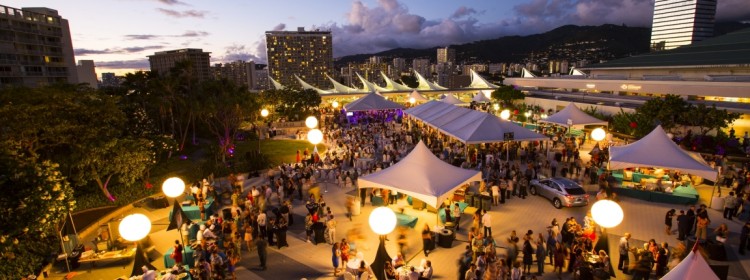








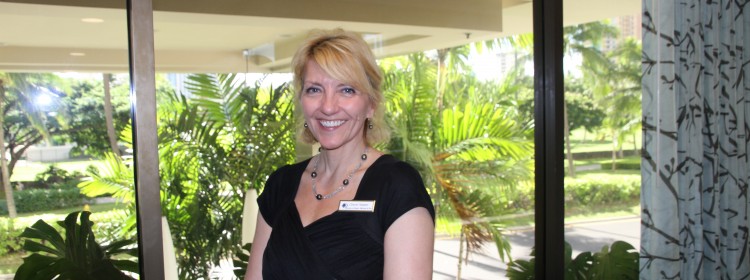




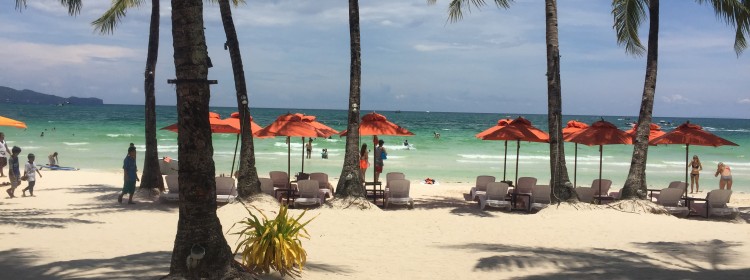

 There’s a serene lap pool as well as a spa and fitness centre, and two restaurants serve as well-priced alternatives to the plethora of other outlets that front onto White Beach.
There’s a serene lap pool as well as a spa and fitness centre, and two restaurants serve as well-priced alternatives to the plethora of other outlets that front onto White Beach.
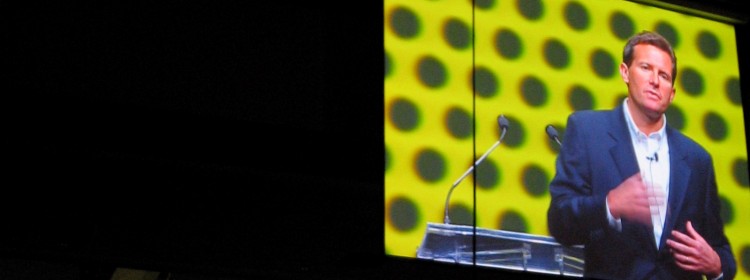
 If you heed them you may find people will love hearing you talk. A happy audience is an attentive one – who’ll absorb the messages you want to deliver. And when you know they’re enjoying what you’ve got to say, you’ll have fun as well.
If you heed them you may find people will love hearing you talk. A happy audience is an attentive one – who’ll absorb the messages you want to deliver. And when you know they’re enjoying what you’ve got to say, you’ll have fun as well. The clergy are notorious sinners when it comes to talking boringly and humourlessly, and always have been. The American president Calvin Coolidge reportedly once sat through an interminable hellfire and damnation sermon from a preacher. When asked afterwards what the preacher spoken about, the president replied: “Sin, he was against it.”
The clergy are notorious sinners when it comes to talking boringly and humourlessly, and always have been. The American president Calvin Coolidge reportedly once sat through an interminable hellfire and damnation sermon from a preacher. When asked afterwards what the preacher spoken about, the president replied: “Sin, he was against it.” USE OTHER EVIDENCE
USE OTHER EVIDENCE Some of the greatest speeches in history have only lasted a few minutes, notably Abraham Lincoln’s Gettysburg address (four minutes) and Reverend Martin Luther King’s “I have a dream” speech (five).
Some of the greatest speeches in history have only lasted a few minutes, notably Abraham Lincoln’s Gettysburg address (four minutes) and Reverend Martin Luther King’s “I have a dream” speech (five). Another:
Another:
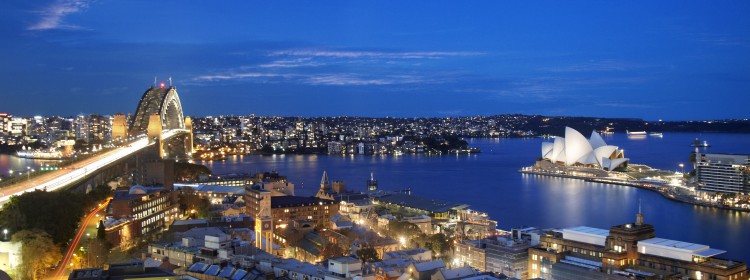
 Every operator will say this of course, but this hotel has a highly experienced on-site events team led by a respected professional, and the cheerfulness of obliging employees is evident from the moment you step into the marble-floored lobby.
Every operator will say this of course, but this hotel has a highly experienced on-site events team led by a respected professional, and the cheerfulness of obliging employees is evident from the moment you step into the marble-floored lobby. That could be, for example, climbing the bridge together, sunset sailing while harbour island hopping, enjoying views of the city from a helicopter and so on.”
That could be, for example, climbing the bridge together, sunset sailing while harbour island hopping, enjoying views of the city from a helicopter and so on.” “Our repeat business is a testament to our ability to meet clients’ needs,” says Paul McMurray. (Indeed with the power of social media these days, the hotel’s operators recognise that having clients as ambassadors is critical. Moreover the Sydney hotel gets mostly fulsome reviews on TripAdvisor and elsewhere).
“Our repeat business is a testament to our ability to meet clients’ needs,” says Paul McMurray. (Indeed with the power of social media these days, the hotel’s operators recognise that having clients as ambassadors is critical. Moreover the Sydney hotel gets mostly fulsome reviews on TripAdvisor and elsewhere).
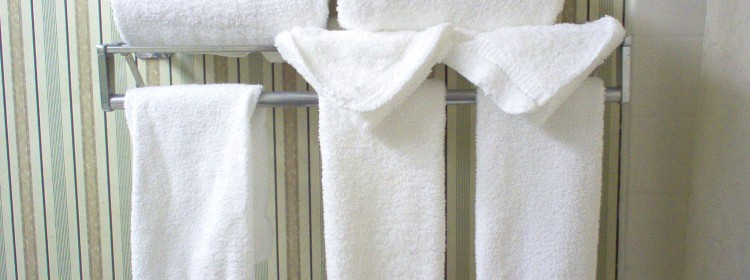
 Such practices, including a sign that reads “save the planet: re-use towels,” coupled with claims of corporate social responsibility, have soiled the trust of American consumers who are increasingly recognising hotels’ green claims may be self-serving, it says.
Such practices, including a sign that reads “save the planet: re-use towels,” coupled with claims of corporate social responsibility, have soiled the trust of American consumers who are increasingly recognising hotels’ green claims may be self-serving, it says.
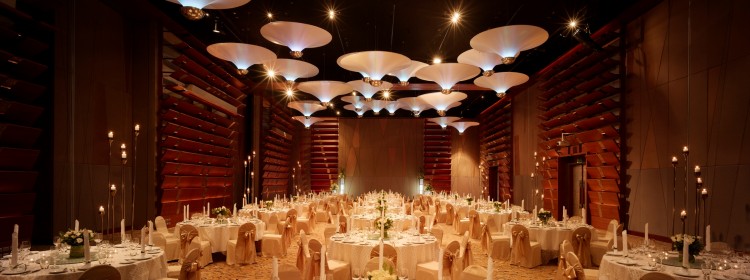
 “Staying in this kind of atmosphere, with a view of the river and its life is something visitors don’t usually find in other hotels in the city,” says Heidi. “European MICE clients coming to Bangkok tell me they prefer this kind of experience to the shopping-mall set-up they see elsewhere. That may be on reason our occupancies are so good.”
“Staying in this kind of atmosphere, with a view of the river and its life is something visitors don’t usually find in other hotels in the city,” says Heidi. “European MICE clients coming to Bangkok tell me they prefer this kind of experience to the shopping-mall set-up they see elsewhere. That may be on reason our occupancies are so good.”
 “It’s about flexibility and how willing you are to make the impossible happen,” Heidi says. “Our attitude is of course we can do it. How we’ll do it is our problem.”
“It’s about flexibility and how willing you are to make the impossible happen,” Heidi says. “Our attitude is of course we can do it. How we’ll do it is our problem.”
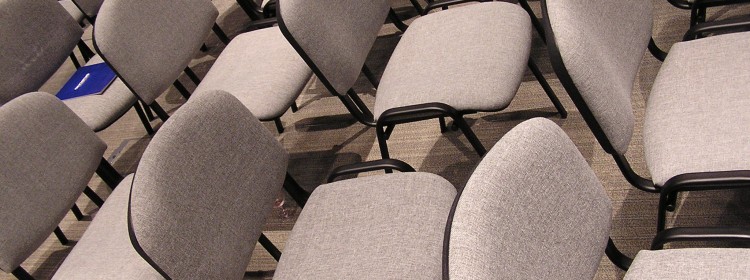
 Get better and more ideas
Get better and more ideas

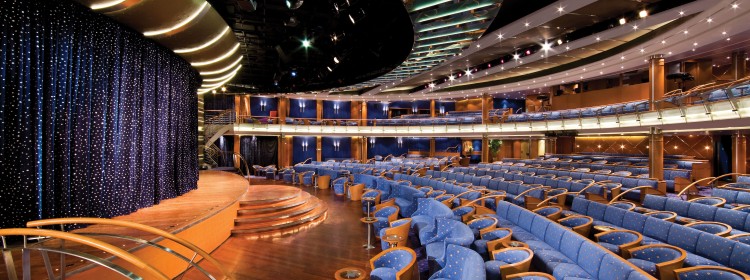


 Over the years, we’ve established relationships with cruise lines and suppliers, and we have lots of creative ideas for customised experiences. We’re based in South Florida, widely known as being the cruise capital of the world, so we can inspect many ships and meet face-to-face with line executives on behalf of our clients.
Over the years, we’ve established relationships with cruise lines and suppliers, and we have lots of creative ideas for customised experiences. We’re based in South Florida, widely known as being the cruise capital of the world, so we can inspect many ships and meet face-to-face with line executives on behalf of our clients.

